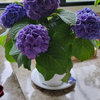Pruning a pee gee hydrangea
ianna
18 years ago
Related Stories

GARDENING GUIDESHouzz Call: What’s Your Favorite Backyard Beauty?
The simple, honest daisy is this writer’s go-to garden flower. We want to hear which plant, flowering or otherwise, gives you special joy
Full Story
GARDENING FOR BUTTERFLIESGarden for Wildlife to Reap Rich Rewards
When you plant with animals and insects in mind, you make gardening easier, the planet healthier and yourself more present
Full Story







yellowgirl
iannaOriginal Author
Related Professionals
Mount Wilson Landscape Architects & Landscape Designers · Azalea Park Landscape Contractors · Brownsville Landscape Contractors · Deerfield Landscape Contractors · Hilton Head Island Landscape Contractors · Leicester Landscape Contractors · Matteson Landscape Contractors · Paramus Landscape Contractors · Petaluma Landscape Contractors · York Landscape Contractors · Callaway Siding & Exteriors · Carmel Siding & Exteriors · Kansas City Siding & Exteriors · Marlton Siding & Exteriors · Rahway Siding & Exteriorsyellowgirl
iannaOriginal Author
dhardee
iannaOriginal Author
kenny_gardener
iannaOriginal Author
iannaOriginal Author
kenny_gardener
twilkins
iannaOriginal Author
canonl0ve
iannaOriginal Author